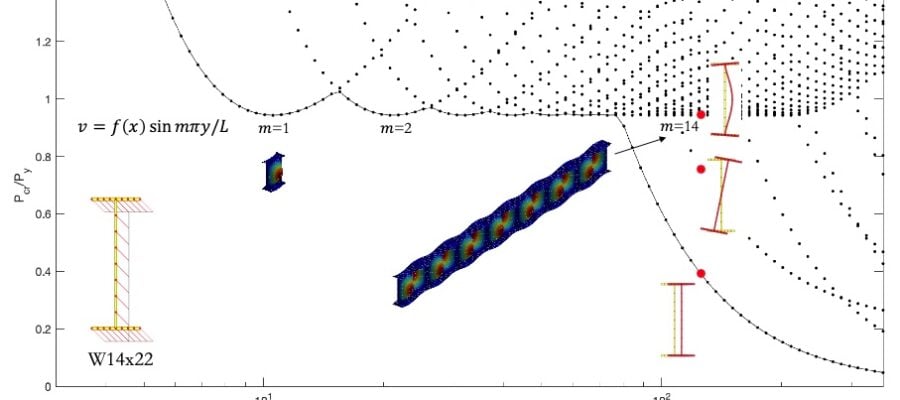Today is the 1st of January 2025, as I write this – happy new year. I wanted to take a moment to provide an update on the development of CUFSM – my long-running stability analysis software project.
First, and foremost, the switch to GitHub has been a real success. CUFSM is under active development and multiple contributors are improving the code and expanding its capabilities. I encourage you to go to GitHub and get involved yourself. Some of the issues currently flagged are relatively simple improvements with big benefits.
Second, the big improvements are all in the Matlab version. Apologies, compiling the code for general use is not much fun, and I live my life on a Mac and getting an up to date PC and doing the compile always takes a day and I never seem to be excited for that day. So for now, the real benefit is for all those students and academics out there that have matlab – as we have added a lot lately, here’s 2024’s additions:
- awesome and fast 3d plotting of the buckling shapes, including unique plots that are specific to finite strip so you can visualize the strip as well as 2D and 3D shapes – great for teaching and understanding
- A completely reworked help system, with all the help messages pulled into one referenced html page – making it easier to learn CUFSM and to improve the documentation long term
- for those that script – free vibration has now been added with examples – not in the GUI yet, but a great new tool in CUFSM
- force-based constrained FSM also added for those that script – this technique can identify local, distortional, and global buckling in an incredibly robust set of situations and is likely to become the standard bearer in future version of CUFSM (or at least an option!)
- speed enhancements across the menu – in some cases the differences are enormous, making previous slow loading GUI pages a thing of the past.
All of the preceding happened in 2024, so that is great news for everyone that enjoys learning more and utilizing more stability analysis tools. And yes, I will work on the compiling so those that use the compiled version can benefit too.
Third, what’s happening in 2025? For sure, we will continue to enhance the existing code base. At one point I thought the answer might be to leave Matlab – but I am fully committed, we will continue to develop in Matlab and leave it to other friends to port to Julia, Python, and the like – which has happened in the past.
We have a lot of new work to integrate into the GUI, and some past work to clean up. In addition we have some new tools with the Finite Tube Method that deserve GUI treatments similar to CUFSM. So, meet me over on GitHub, post your issues and get involved – I look forward to continuing to advance this great open source tool – and maybe even make some more updated tutorials and new compiled versions for the community.
-Ben Schafer
